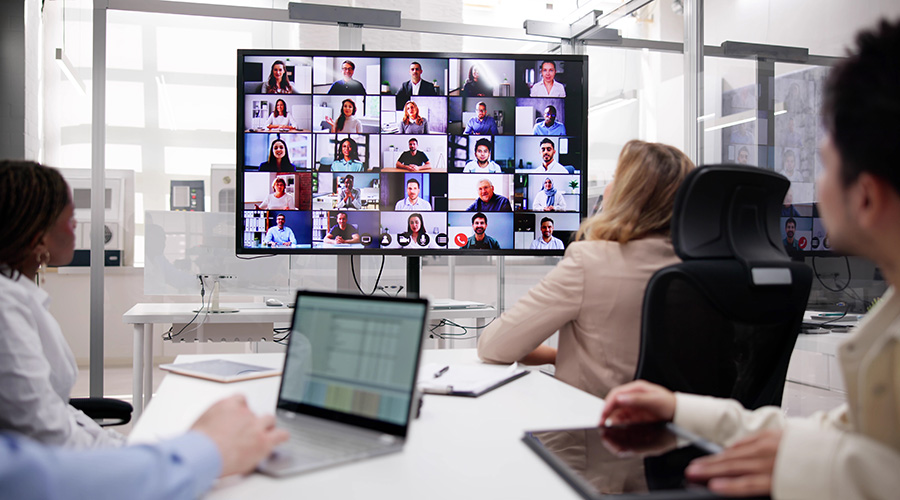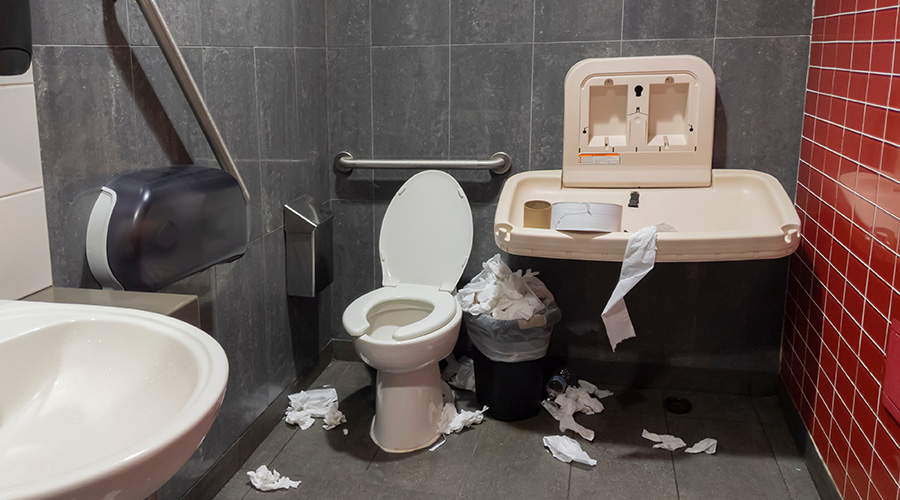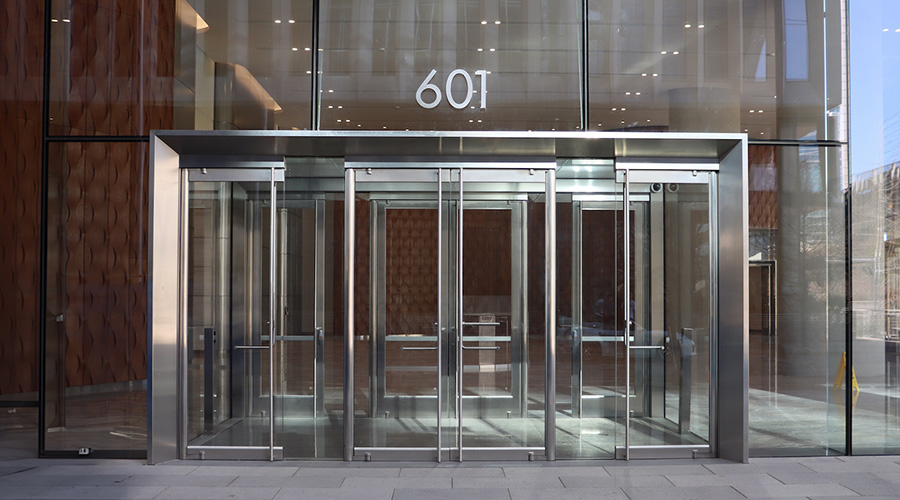
Bringing People Together in a Hybrid World
Facility staff need to manage virtual workspaces the same as physical ones. July 22, 2024
By Jeff Wardon, Jr., Assistant Editor
The pandemic era meant a paradigm shift for how office spaces got used and how co-workers interacted with each other. With people going remote, it created an equal ground for the employees. However, as the hybrid model came into being, the playing field became uneven and led to unique challenges for facility managers.
To explore this emerging virtual and hybrid frontier, Charles Pellicane, CPCU, senior vice president, business development at Human-I-T, will be presenting the session “Managing Facilities in a Hybrid World” at NFMT Remix 2024 in Las Vegas from October 29 to 30.
FacilitiesNet: What best practices can organizations follow to effectively manage their facilities when operating in multiple work models simultaneously or transitioning between different models?
Charles Pellicane: Some of the best practices is to just really think of the virtual office as another physical one.
So, we have multiple physical facilities across the country: one in Los Angeles, one in Detroit, and then we have an office in New York as well as all our remote employees across the country. We think of our virtual office as a physical office and setting some of those best practices around the same as you would with one. Everyone needs to be there at a particular time. If you are working that day, you should be in the office. You should match your calendar and think of this as the physical office of today.
You should think I need to be at my desk starting at whatever time that is, and I need to make sure that I am balancing both that do not disturb time and making sure that I'm available and I have my door open so that people do feel like they can collaborate with me.
We will also invite people into our virtual office, guests from different organizations and external groups. We do have a virtual lobby where we greet people in that is the same as a lobby in a physical office. If you are a guest in our virtual office, you cannot open the lobby doors, so whoever you are meeting with can greet you in the office and bring you into a meeting space.
This can be really fun, because then it changes it up a little bit from bouncing back and forth from a Google Meet to a Zoom to a Teams meeting. Instead, you come into a virtual office space. You also get to design a character and it just makes it a little bit different and unique.
Some other best practices when you are managing your facilities is you have got to be flexible to adapt to changing needs. You are going to have to sometimes change what spaces are configured for. If you have a room set up in more classroom style versus pods, you must consider the same for your virtual office.
You need to either have a wide variety of spaces or be flexible with your design. Just because this is the out-of-the-box virtual office does not mean that we do not need to be adaptable to our needs and maybe create some different spaces that people could use. Maybe we need meeting rooms that are particularly large for the work we do or a lot more focused pods in our virtual office, and we need to design that.
Also (for virtual offices), just the same as you would with the physical office, make sure that you're performing regular maintenance and some upgrades there. Conduct checks of how things are going for people, making sure that you have the right facilities for folks or have the right meeting rooms for folks and that the technology is working.
Another best practice is having that hybrid friendly design and having those collaborative spaces to support interaction between not only remote employees but remote and in person employees. There are also virtual games within the virtual office, so you can bring your employees over to different game tables and do different team games to do fun engaging activities there. So, having some of that hybrid friendly design where you have got the engagement right in the platform is cool
Just really making sure that those policies and procedures are clear and that you really think of that virtual office as a physical one. Then, as you are moving between work models, everyone is in the same space, nobody feels left out, and you are thinking of how to make sure they have a good time in that space.
FacilitiesNet: How can organizations engage their staff, and how is this different depending on the work model?
Pellicane: Organizations can engage their staff depending on the work model. It really changes when we were all in office, as it was pretty easy. If everyone is there together, you can just take everyone out after for a dinner or you can hold an event in the office. You can go to a baseball game after or whatever it is.
It just made it a little bit easier to have engagements and to collaborate with each other and get engaged with your staff. You could have different in-person exercise clubs and activities and being a part of the old office culture.
When everyone is remote, it is more challenging, but as we saw during the pandemic, we all reacted well. If everyone is remote, you can do remote activities. You can do virtual escape rooms. Many people got creative with that, like different talent shows and things during the pandemic. It definitely is a bit more challenging if everyone is remote, but if everyone is remote, then everyone is equal and you can play different games like Jeopardy and Wheel of Fortune. They can make their remote space more engaging.
When we think about the hybrid model, it is challenging to engage everybody. This is because the in-person people may be doing one thing and remote may be doing another thing, then they start to feel like they are not connected. That is where I mentioned that a virtual office can really help with this as far as you can have an all-hand meeting room where you can bring in your entire organization and do companywide announcements, conversations or just networking events.
I also mentioned that there's game rooms and different games available within the system. There are also different musical capabilities that the system has, you can play on a piano or do different things like that. They have microphones where you can kind of sing to everybody. So, there are a lot of different games and old arcade games that you walk up to like a virtual arcade booth, and you can either play by yourself or with other people. That just really helps with the engagement.
As I mentioned, if you have remote employees, you are looking at those regular check-ins and touching base with your team as an individual. You can also do recognition reward programs and online team building activities. Another thing that we have really found successful is having those companywide events and meetings. Then also the individual departments do happy hours or things like that, where you may not be going out to a bar and having a drink, but you bring everyone around to a game, and they have fun for you know 30 minutes at the end of the day on a Friday. It lets them get to know each other a little bit more and see each other as individuals.
Really just make sure to incorporate both the remote staff and in-person staff – that is just an excellent thing to do.
To learn more about navigating the hybrid work environment, be sure to check out Pellicane’s session at NFMT Remix this October. Register for Remix here.
Jeff Wardon, Jr. is the assistant editor for the facilities market.
Next
Read next on FacilitiesNet












